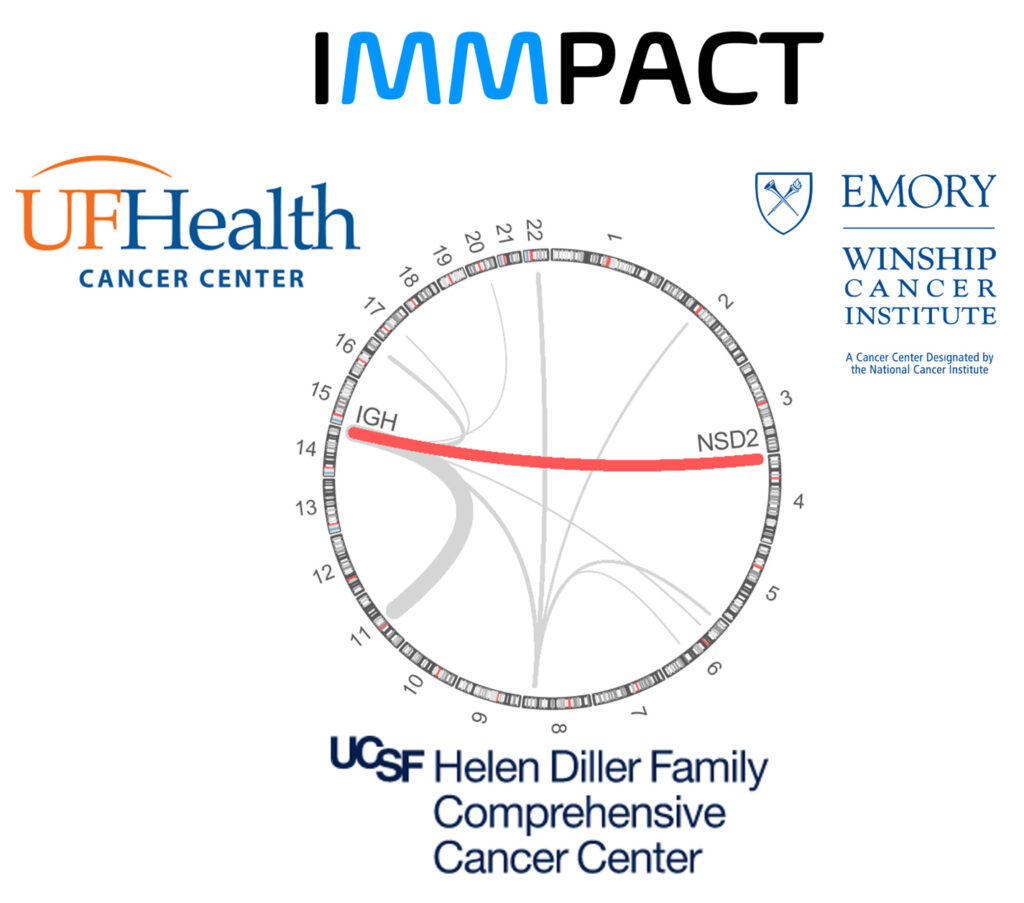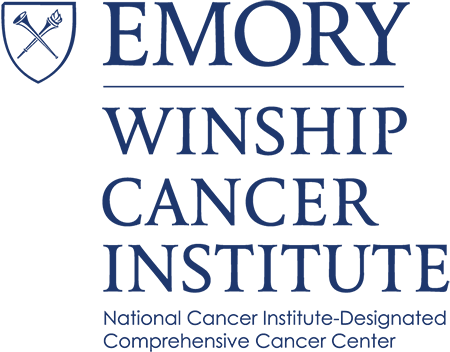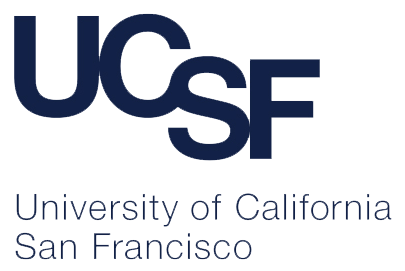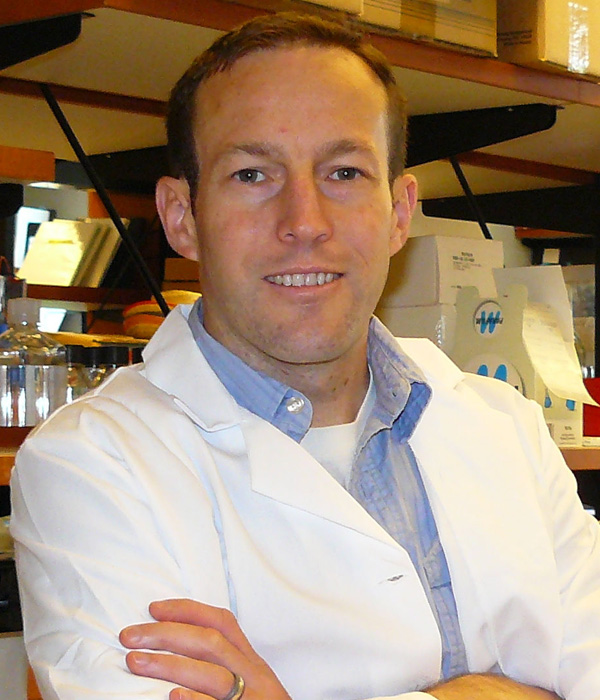
Despite t(4;14) myeloma being the most distinctive myeloma subtype epigenetically and transcriptionally, and being at high-risk of early relapse and death, t(4;14) myeloma are treated with similar therapeutic approaches as other myeloma subtypes. We propose to probe mechanisms of targeting t(4;14) myeloma using complementary expertise and resources from each of our laboratories. By understanding how NSD2-dependent changes in gene expression influence cell metabolism, cell survival and immune recognition, we aim to discover new ways to target t(4;14) myeloma. NSD2/MMSET is uniformly overexpressed in t(4;14) myeloma resulting in widespread histone 3 lysine 36 dimethylation, a modification associated with gene activation. Ectopic expression of NSD2 causes large shifts in chromosome chromatin modification across the genome leading to aberrant activation of genes, many not native to the hematopoietic system, at the same time repressing others through redistribution of repressive chromatin effectors such as EZH2 and DNA methylation.
Lawrence Boise, PhD
R. Randall Rollins Chair of Oncology
Department of Hematology and Medical Oncology
Emory University School of Medicine
Associate Director of Education and Training
Winship Cancer Institute of Emory University
Regulation of Mitochondrial Priming in t(4;14) myeloma: Mitochondrial priming has been shown to correlate with clinical responses in several cancers including multiple myeloma. Moreover, therapies can alter mitochondrial priming that can provide insights into resistance to therapeutic response as well as inform novel combinations. However, mitochondrial priming has been studied in a small number of myeloma patient samples and cell lines, with very little known about priming in t(4;14) myeloma. We will define mitochondrial priming and how it is influenced by therapy in t(4;14) myeloma.
Jonathan D. Licht, MD
Director – The University of Florida Health Cancer Center
Professor of Medicine and Biochemistry and Molecular Biology
The University of Florida
Epigenetic basis of loss of immune response in t(4;14) MM cells. High levels of NSD2 leads to suppression of genes involved in the immune response. In this project the linked lab will determine what epigenetic abnormalities due to the overexpression of the NSD2 histone methyltransferase leads to apparent repression of adaptive immunity. Genetic screens will be undertaken to find ways to reactivate expression of the immune response of myeloma and new anti-NSD2 therapeutic strategies (enzyme inhibitors, protein degraders, antisense therapies) will be utilized to increase immune response to t(4;14) myeloma cells in soon genetic animal models. These experiments are aimed to guide specific immune strategies for t(4:14) MM.
Mala Shanmugam, PhD
Associate Professor
Department of Hematology and Medical Oncology
Winship Cancer Institute of Emory University
Identifying metabolic vulnerabilities in t(4;14) multiple myeloma: Dysregulated metabolism is now considered a cancer hallmark. Metabolites provide a source of bioenergy, building blocks to replicate and directly or indirectly regulate signaling and gene expression. Genetic alterations in cancer cells hard-wire dependencies on specific metabolic pathways to support survival and growth. Cellular metabolism also impacts therapy sensitivity and resistance mechanisms. These observations form our premise to identify NSD2/t(4;14) multiple myeloma-specific metabolic vulnerabilities and understand how they support the aggressive biology of this multiple myeloma subgroup. Knowledge of distinctive metabolic features will allow us to integrate t(4;14) metabolism dependencies with its unique epigenetic, proteomic, cell death, and immunogenic features facilitated by collaboration with our IMMPACT consortium scientists.
Arun P. Wiita, MD, PhD
Associate Professor in Residence
Dept. of Laboratory Medicine
Dept. of Bioengineering and Therapeutic Sciences
University of California, San Francisco
Targeting CD70 with CAR-T cells: Dr. Wiita’s role in the IMMPACT consortium will be two-fold. First, his group will work to preclinically validate novel CAR-T cells versus a cell surface target his group has found to be selectively enriched in t(4;14) myeloma. t(4;14) patients currently relapse more frequently after existing BCMA CAR-T treatments and are therefore in need of new cell therapy options. The goal of these studies is to spur the eventual development of a clinical trial of a new t(4;14)-specific CAR-T cell therapy to address this need. Second, he will work with all other consortium members to use his group’s expertise in “cell surface proteomics”, a method by which we can simultaneously monitor the changes in thousands of cell surface changes in t(4;14) models. Our goal is to identify new immunobiology and relevant therapeutic targets in the context of epigenetic, metabolic, or apoptotic perturbations spurred by other consortium projects, to ultimately identify novel, rational combination therapy strategies.
Benjamin G. Barwick, Ph.D.
Assistant Professor
Department of Hematology and Medical Oncology
Emory University – School of Medicine
Winship Cancer Institute
Determining mechanisms of immunogenicity in t(4;14) multiple myeloma: Ectopic expression of NSD2 in t(4;14) myeloma results in excessive H3K36me2 and widespread epigenetic remodeling and transcriptional dysregulation. How this results in worse outcomes for t(4;14) patients is largely unknown. Dr. Barwick will be investigating how epigenetic remodeling in t(4;14) myeloma alters the innate immunogenicity of t(4;14) myeloma cells using genetic and pharmacologic tools coupled with high-throughput transcriptomic and epigenomic analyses and functional assays. The goals of these studies are to identify the unique biology of t(4;14) myeloma that can be exploited through emerging therapies or rational combinations of existing therapies to enhance the innate immunogenicity, thereby improving outcomes for patients with t(4;14) disease. As part of the wider IMMPACT consortium, Dr. Barwick provides expertise in computational biology, genomic analyses, and epigenetic mechanisms of gene regulation.








